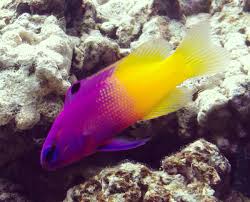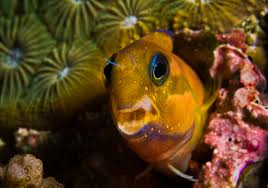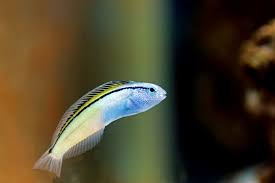
China, a land rich in history, culture, and mythology, has long been a home for dragons—majestic creatures that symbolize power, wisdom, and prosperity. These mythical beings play a prominent role in Chinese folklore, where they are often depicted as protectors, bringers of good fortune, and fierce warriors of nature. Over the years, dragons have transcended their traditional roles in mythology, becoming powerful symbols in modern Chinese art and culture. One of the most fascinating aspects of this artistic evolution is the role dragons play in contemporary art competitions in China, where artists of all ages and backgrounds explore and reinterpret the mythical creature in innovative ways.
In this article, we will delve into the various creative art competitions in China centered around dragons. We will explore the importance of these events in fostering artistic talent, preserving cultural heritage, and encouraging a deeper understanding of the dragon’s significance. By examining the ways in which dragons are portrayed, both traditionally and in modern contexts, we can appreciate how Chinese art competitions continue to shape the artistic landscape and keep the rich legacy of dragons alive for future generations.
1. The Cultural Significance of Dragons in China
Before delving into the art competitions themselves, it’s important to understand the cultural significance of dragons in Chinese society. In Chinese mythology, the dragon is a revered creature associated with strength, prosperity, and good fortune. It is a symbol of the emperor’s power, often portrayed as a celestial being with the ability to control natural elements like water, rain, and storms. The dragon’s presence in Chinese culture is vast, appearing in everything from ancient architecture and traditional clothing to modern festivals and celebrations.
In Chinese art, dragons are frequently depicted as noble, powerful, and elegant creatures. These mythical beasts can take on various forms, such as the long, serpentine dragon, the five-clawed imperial dragon, or even hybrid creatures that combine elements of dragons and other animals. The versatility of the dragon as a subject matter in art makes it a popular choice for creative expression.
This deep-rooted cultural significance has influenced the development of various art forms, including traditional calligraphy, painting, sculpture, and contemporary digital art. As China moves forward into the 21st century, the tradition of dragon-related art continues to thrive, with competitions that celebrate the ongoing importance of the dragon as a cultural and creative force.
2. The Rise of Dragon Art Competitions in China
In recent years, China has witnessed an explosion of art competitions that focus on the depiction of dragons, with both professional and amateur artists participating in these events. These competitions have become essential platforms for showcasing the country’s rich artistic heritage while also encouraging contemporary interpretations of the dragon motif.
National and Regional Art Competitions:
Many national and regional art competitions in China feature the dragon as a central theme. These contests invite artists to create works that explore the symbolism of dragons, whether through traditional techniques such as ink painting and brushwork or through modern mediums like digital art, sculpture, and mixed media. These competitions often draw large crowds of participants and spectators, as they provide artists with an opportunity to demonstrate their technical skills and creativity, while also engaging with the broader cultural significance of the dragon.
Some of these competitions are tied to major national festivals, such as the Chinese New Year, Dragon Boat Festival, or Mid-Autumn Festival, where dragons feature prominently in the celebrations. In these instances, the competitions often culminate in public exhibitions and performances, allowing the public to appreciate the artistic interpretations of dragons in both traditional and modern contexts.
3. Traditional Dragon Art in Competitions
While contemporary representations of dragons are widespread in China’s art competitions, traditional art forms still hold a prominent place. Traditional Chinese art competitions often focus on time-honored techniques like Chinese ink painting, calligraphy, and sculpture, all of which have rich historical connections to the depiction of dragons.
Chinese Ink Painting and Dragons:
Ink painting has a centuries-old tradition in China, and dragons are a popular subject for artists using this medium. In these competitions, artists are often tasked with creating dynamic, fluid representations of the dragon, capturing its grace, strength, and vitality. The long-tailed dragon often becomes a focal point, winding through the mountains, clouds, or waves, emphasizing its connection to the natural world and its ability to command the elements.
In traditional Chinese ink painting competitions, artists are judged not only on their technical ability but also on how well they capture the dragon’s symbolic qualities. A skilled artist may incorporate the use of negative space, fluid brushstrokes, and careful color application to bring the dragon to life, creating an image that transcends mere representation and speaks to the dragon’s deeper cultural significance.
Calligraphy and Dragon Symbols:
In addition to painting, Chinese calligraphy is another art form where the dragon plays a central role. Many calligraphy competitions feature dragon motifs or phrases associated with the dragon, such as “Long Feng Cheng Xiang” (龙凤呈祥), meaning “dragon and phoenix bring prosperity.” Calligraphers often create intricate designs using brush strokes that emulate the elegant yet powerful form of the dragon, infusing the characters with symbolism and meaning. These competitions highlight the link between art and language, as the act of writing becomes a visual expression of cultural values and artistic tradition.
Traditional Sculpture and Dragon Imagery:
Sculpture competitions in China also frequently feature dragons as subjects. Sculptors create intricate dragon statues from a variety of materials, including bronze, wood, jade, and clay. These sculptures are often large-scale pieces, made to resemble dragons in their most traditional forms, such as the Chinese Imperial Dragon with its five claws and majestic features. The sculptures often evoke a sense of grandeur and reverence, showcasing the artist’s ability to combine technical skill with a deep understanding of dragon symbolism.
4. Contemporary Interpretations of Dragons in Art Competitions
While traditional depictions of dragons remain significant in Chinese art competitions, modern artists are increasingly experimenting with new interpretations of the dragon. In contemporary competitions, artists are encouraged to think outside the box, exploring dragons in new contexts, utilizing modern mediums, and reimagining their symbolism in innovative ways.
Digital Art and Dragons:
One of the most exciting trends in China’s dragon-related art competitions is the rise of digital art. Artists today have the ability to use computers, tablets, and other digital tools to create stunning representations of dragons. These digital works can take many forms, from highly detailed 3D renderings to animated characters that breathe fire or soar through the skies. Digital art allows for endless possibilities, and as a result, artists are able to push the boundaries of dragon imagery, creating pieces that are as dynamic and fluid as the creatures themselves.
Mixed Media and Installation Art:
Mixed media and installation art have also found their way into dragon-themed art competitions. Artists combine traditional materials with contemporary techniques, such as photography, video, and interactive elements, to create large-scale installations or immersive experiences centered around dragons. These installations might invite viewers to walk through a giant dragon’s body, interact with dragon-inspired light displays, or experience the creature through sound and movement.
These modern interpretations of dragons are often meant to provoke thought and challenge the viewer’s understanding of the dragon as a cultural symbol. Instead of simply representing the dragon in a traditional sense, these artists ask questions about its role in today’s society, its place in contemporary mythology, and how it can be reinterpreted in an increasingly globalized world.
5. The Impact of Dragon Art Competitions on Society
Dragon art competitions in China are not just about showcasing artistic talent; they also play a significant role in preserving and promoting Chinese cultural heritage. These events provide an opportunity for both established and emerging artists to engage with the rich traditions of Chinese mythology while simultaneously offering them a platform to innovate and express their unique artistic vision.
Promoting Cultural Heritage:
By participating in dragon-themed art competitions, artists are keeping the legacy of the dragon alive in modern China. These competitions foster a greater appreciation for traditional Chinese art forms, such as painting, sculpture, and calligraphy, while also providing a stage for contemporary artists to reinterpret these ancient symbols. As a result, the competitions help bridge the gap between the old and the new, ensuring that future generations continue to connect with their cultural roots.
Encouraging Creative Expression:
In addition to preserving cultural heritage, dragon art competitions encourage creative expression and push the boundaries of artistic exploration. These events celebrate innovation and originality, encouraging artists to reimagine the dragon in ways that reflect the complexities and diversity of modern life. Whether through digital mediums, installations, or other contemporary forms, these competitions challenge artists to think creatively and use their talents to explore new ideas.
6. Conclusion
The world of dragon-themed art competitions in China is vast and diverse, offering artists the opportunity to engage with one of the most enduring symbols in Chinese culture. Through both traditional and modern artistic forms, these competitions celebrate the enduring power of the dragon as a cultural icon while encouraging new interpretations that reflect the evolving landscape of Chinese art.
Whether through ink paintings, sculptures, or digital creations, dragons continue to inspire and captivate the artistic imagination of China’s creative community. These competitions not only provide a platform for emerging artists but also play a vital role in preserving the rich cultural heritage of the dragon for future generations. As the dragon continues to evolve and inspire new works of art, it remains a powerful symbol of creativity, tradition, and transformation in Chinese society.









